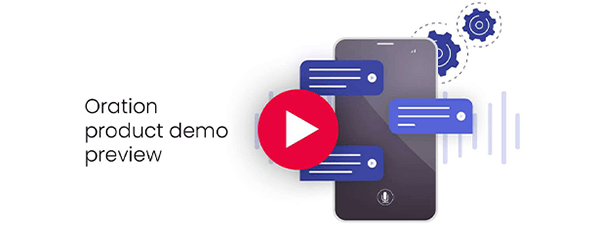The past two years have been a period of unbridled change for the contact centre industry. Like so many aspects of society, the sector was forced to pivot and adjust on the run as the COVID-19 pandemic swept the planet and now, with a sense of normalcy finally returning, executives and managers are doing their best to determine what their new world looks like. From remote work and hybrid environments to the impacts of The Great Resignation, today’s contact centre looks a lot different to the one we saw at the start of 2020.
Among the changes is a push towards self-service options for customers making inbound calls. The pandemic inspired a dramatic increase in call volumes, with one study showing all industries experienced a year-on-year spike including the retail sector which soared by more than 34%. Crucially, volumes have not only remained high but a global labour shortage means that hiring new agents to handle them has become increasingly difficult. It has been reported that contact centre positions were one of the most affected roles during the pandemic and experts suggest the labour shortage is not going to be fixed simply by filling those seats through hiring.
The double whammy of more customers phoning contact centres and fewer agents able to answer them requires an innovative solution and many contact centres have found one in the form of automated self-service technology. A study by renowned research and consulting firm Gartner found that 80% of customer service leaders believe moving contact centre volume from assisted-service to self-service channels is one of their most important priorities, followed closely by automating customer service processes.
What is customer self-service?
As the name suggests, customer self-service allows consumers to resolve problems, find answers and even complete tasks without the assistance of a customer service representative. Traditionally utilised on apps and websites, the ability to troubleshoot and complete administrative tasks of one’s own accord has been a blessing for many customers and changed their attitude towards the age-old question of ‘How can I help?’. According to one survey, almost 70% of customers prefer self-service over talking to a real-life person as it means convenience, faster response times and the ability to feel in control of a task.
The benefits of self-service are not restricted to customers either. The implementation of self-service tools means that human agents are no longer required to assist callers with simple tasks, allowing them to focus on more complex customer queries or productive assignments. The potential to streamline customer service operations can also save considerable costs and boost efficiencies.
What is an example of self-service technology?
When a customer dials an inbound contact centre, they typically have one item at the top of their wish list – a resolution as quickly as possible.
Cloud-based inbound contact centre software such as Oration by Convai delivers on this front by automatically routing calls based on a customer’s natural response to being asked “How may I help you today?”. Rather than being required to navigate a limited touch-pad menu to ‘hopefully’ arrive at the right place, they can simply state their reason for phoning and Convai delivers a cutting-edge call routing solution.
Depending on the nature of the query, it is now time for IVR call routing to shine. An Interactive Voice Response system is one of the premium ways for inbound callers to self-serve, particularly those with the capacity to recognise caller intent using AI-powered speech recognition technology. Rather than having to navigate online resources or wait in a queue for an agent, callers are afforded the opportunity to complete tasks such as making bookings, checking account balances, finding store locations and confirming product information all through the power of their voice.
Along with boosting customer experience, automated self-service tools such as Oration can reduce the number of calls agents receive by up to 30%. Better still, they allow users to avoid costly custom development projects by presenting them with pre-packaged speech-driven micro-applications that can facilitate a host of self-service options. Unlike the tiered menu of traditional systems, it can also feature any number of self-serve items, resulting in callers feeling more engaged and less constrained by the system.
Of course, a caller may not always be best served by remaining on the phone and that is why Oration can be configured to offer another channel when it will likely deliver a better resolution in a faster time. For example, if a caller was to request information or data that is better presented visually, Oration will offer them the opportunity to switch to an online digital chat agent that would allow the likes of infographics, tables and map location to be shared. Importantly, they will also be able to access them immediately rather than waiting in a call queue.
Summary
The COVID-19 pandemic may be easing but pressure undoubtedly remains on contact centre managers and their agents. Higher call volumes have continued to be sustained, while the impact of the Great Resignation is making it increasingly difficult to recruit to contact centre roles and maintain an adequate workforce. Amid such pressures, organisations are searching for ways to easily and effectively add self-service to their voice channels and many are finding a solution in Oration by Convai, which enables them to rapidly prototype and bring to market self-service functions that eliminate calls from the contact centre.
Optimising customer experience has never been more important, which is why executives and managers need to know contact centres and call centres are not one and the same. Learn how they differ, where they shine and which is the best option to meet the needs of the modern consumer.







